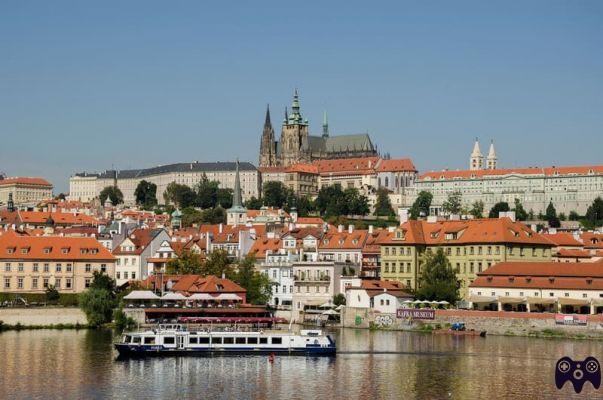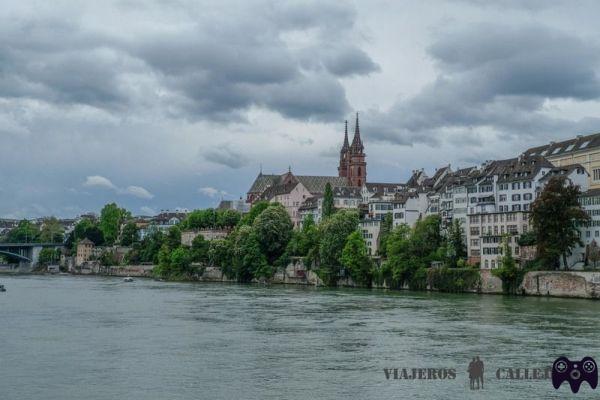European cities are always on lists of the safest in the world. However, it is necessary to remember that the continent is not homogeneous and that in some cities the traveler needs to be careful. In this article, we list the Europe's most dangerous cities and we explain the reasons for that. Check out.
Most dangerous cities in Europe: danger concept
First of all, it is important to point out that the concept of danger is totally different in Brazil and in Europe.
There, for example, there are not the high rates of urban violence, with robberies and murders, that exist in Brazil. However, there are also crimes of corruption and cybercrime, as well as ethnic conflicts and terrorist attacks, which are rarer here.
In Europe, violence motivated by political, religious, racial and ideological issues is more pronounced in some regions.
It is also worth warning that European dangers should never be a reason for you to give up on your trip.
Just as you wouldn't give up on a trip to the North or Northeast of Brazil, even knowing that there are the most violent cities in the country, you shouldn't abandon the idea of visiting a European city due to problems that may eventually occur.
Information and a little caution are enough to guarantee your safety and a good trip! Now, if your idea is to live in Europe, it might be interesting to look at our list with caution, as there are much safer cities in Europe.
What are the most dangerous cities in Europe?
One of the most used rankings to measure the safety or insecurity of a city is Mercer's Quality of Living Index survey.
It is used, for example, as a parameter for multinational companies to relocate employees and calculate fair remuneration for professionals working abroad.
The concept of quality of life does not only cover personal safety, but a set that includes physical, mental, psychological and emotional well-being. And quality of life is a concept intrinsically related to the existence or not of violence in cities.
To rank the ten most dangerous destinations on the European continent, we resorted to Mercer's 2019 survey. This is because, due to the coronavirus pandemic, the 2020 ranking cannot yet be completed.
Parameters used
To arrive at the result of the list of the most dangerous cities in Europe, we consulted the list from bottom to top: from European cities with less quality of life to those with better quality of life.
We present, then, the ten cities with the lowest level of quality of life, among the 231 cities considered in the study. It is worth mentioning that the survey only included those cities where the necessary data for the comparison could be obtained.
To corroborate our argument, we also resorted to the Itamaraty portal, to collect the most relevant recommendations for each of the aforementioned destinations. Follow along.
1. Minsk (Belarus)
The capital of Belarus, in Eastern Europe, is governed by a dictator (the last in Europe) and has one of the highest rates of social inequality on the continent, which helps explain its ranking as the most dangerous.
The Itamaraty portal warns that the level of urban crime is low in the country. However, even though the record of crimes against foreigners is low, the approaches can be violent if the tourist offers some kind of resistance.

Cases of electronic crimes are common, as are cases of corruption, bribery and harassment. “If a Brazilian citizen is a victim or witnesses crimes of bribery, kickbacks, electoral fraud, nepotism, kleptocracy, legal looting, plutocracy or any other type of corruption, it is recommended that the Brazilian Embassy be immediately notified in order to call the authorities places to denounce and investigate the situation”, recommends the Itamaraty.
There are also complaints of harassment against women, and it is recommended that they avoid walking alone, especially at night and in isolated areas.
2. Tbilisi (Georgia)
Georgia was part of the Soviet Union, as was Belarus. Itamaraty states that it is vehemently advised against any movement from the capital Tblisi to the separatist regions of Abkhazia and South Ossetia, administered by authorities not recognized by the Brazilian government and the international community.
In these regions, the occurrence of physical violence, robberies and kidnappings, including foreign citizens and tourists, is more common. The capital, on the other hand, is charming and quiet for Brazilian standards.
3. Tirana (Albania)
The capital of Albania has no crime at Brazilian levels. But there are disputes between locations, especially related to organized crime, with violent actions and gunshots and explosions. Brazilian citizens are advised not to react to any act of xenophobia and to report the occurrence to police authorities and, if necessary, to the Brazilian Embassy.
4. Saint Petersburg (Russia)
Russia is a relatively safe country, but there are reports of thefts on the subway and in areas with high concentrations of people. In the vicinity of bars and nightclubs, there may be a concentration of drunk people and it is advisable to avoid conflict in any situation.
Unaccompanied women are also advised not to remain close to groups of men in these places.

As the city has already been the target of terrorist attacks, Itamaraty recommends that Brazilians “remain with maximum attention, especially when they are close to government buildings, airports, hotels, markets and tourist and leisure places”. Homophobic attacks also happen.
5. Kiev (Ukraine)
Due to the conflicts in eastern Ukraine, especially in the Crimea region, measures were adopted to allow foreigners to enter certain territories, especially in regions bordering Russia. Members of minority ethnic groups can be victims of violence in the city.
Itamaraty advises Brazilian citizens not to react to any situation of violence. The recommendation is to leave the area immediately and report the occurrence to the police and the Brazilian Embassy.
6. Moscow (Russia)
In Moscow, the same recommendations given for Saint Petersburg apply: avoid conflicts in bars and clubs and don't remain alone – especially if you're a woman.
Terrorist attacks, unfortunately, are part of the city's dangers. So, avoid staying long periods near government buildings and points of great agglomeration.
7. Skopje (Macedonia)
There is no Brazilian diplomatic representation in the country, and consular services are provided remotely. This is already a point that demands attention from Brazilians, who are more vulnerable.
In general, Macedonia is a safe country, but the usual precautions with pickpockets should be taken, especially in high-traffic areas. Car theft is also common. There is also the possibility of earthquakes. And social tensions between Slavic-Orthodox and Albanian-Muslim. The country experienced a civil war in 2001.
8. Sarajevo (Bósnia-Herzegovinia)
Bosnia-Herzegovina experienced a violent conflict between Orthodox Christians and Muslims from 1992 to 1995 and since then has experienced some stability, but some ethnic conflicts may still occur.
In green areas, especially outside large centres, there may be undisarmed land mines, so it is necessary to visit forest regions with guides.

Discover the four easiest countries to immigrate to in Europe.
9. Istanbul (Turkey)
After a period of instability and a high frequency of terrorist attacks, the Turkish authorities have managed to prevent the occurrence of new attacks. And tourism has increased. But the risk of new attacks persists, as terrorist groups continue to operate in the region.
To protect yourself, it is recommended to always be well informed about the region and avoid large crowds. Through the social media of the Brazilian embassy and consulate, tourists can follow up-to-date information.
10. Sofia (Bulgaria)
Pickpockets exist in Sofia. As well as scams in bank terminals (ATMs), with equipment that clones cards. Tourists should be aware of this.
The areas inhabited by Gypsies on the outskirts of large cities are degraded, but there are no reports of violence.

In 2012, Bulgaria was the target of a terrorist attack at Burgas airport. Earthquakes can also occur.


























